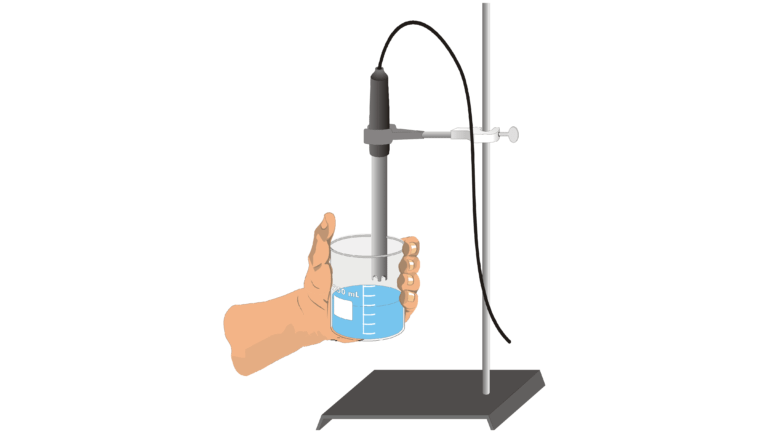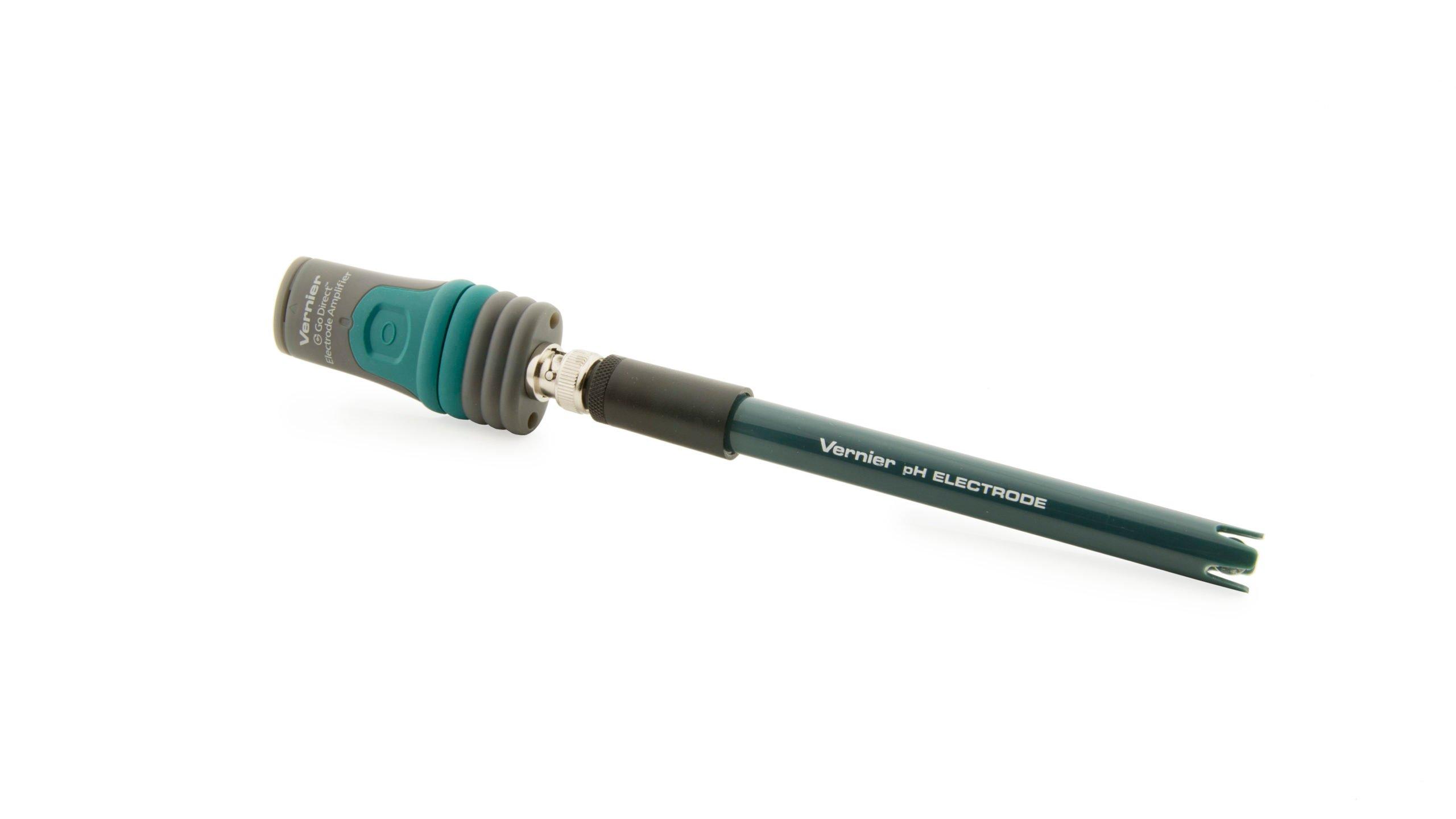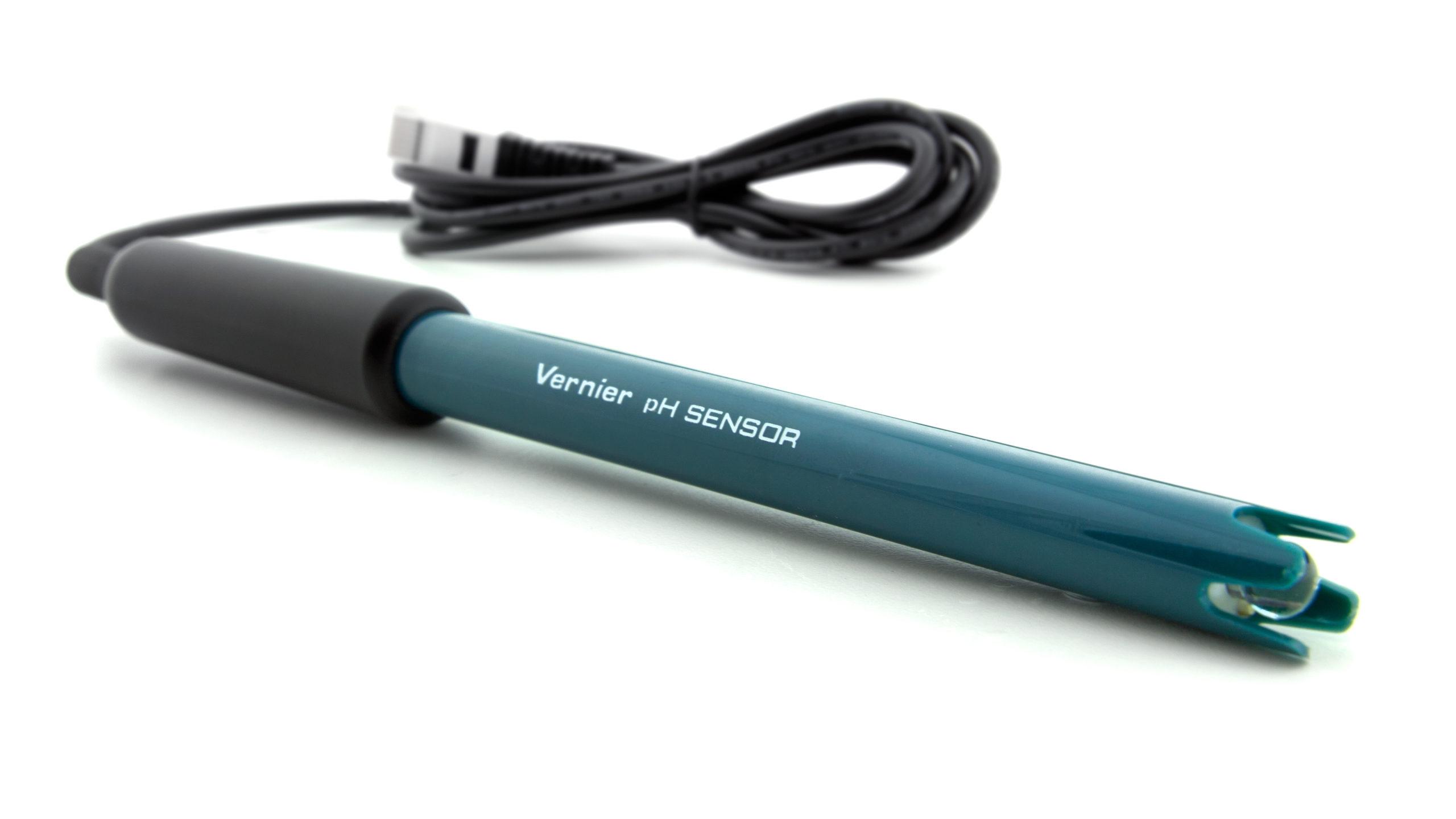
Introduction
Acid rain is a topic of much concern in today’s world. As carbon dioxide gas, CO2, dissolves in water droplets of unpolluted air, the following reaction happens
H2CO3 is a weak acid that causes the rain from unpolluted air to be slightly acidic.
Oxides of sulfur dissolve in water droplets to cause more serious problems. Sulfur trioxide dissolves to produce sulfuric acid, H2SO4, by the equation
The acidity of a solution can be expressed using the pH scale, which ranges from 0 to 14. Solutions with pH above 7 are basic, solutions with pH below 7 are acidic, and a neutral solution has a pH of 7. In Part I of this experiment, you will study the effect of dissolving CO2 in distilled water, which is similar to rain water, on the pH of the water. Then in Part II, you will study the effects of dissolving sulfuric acid on the pH of different water types.
Objectives
In this experiment, you will
- Measure pH.
- Study the effect of dissolved CO2 on the pH of distilled water.
- Study the effect on pH of dissolving H2SO4 in various waters.
- Learn why some bodies of water are more vulnerable to acid rain than others.
Sensors and Equipment
This experiment features the following sensors and equipment. Additional equipment may be required.
Option 1

Option 2

Ready to Experiment?
Ask an Expert
Get answers to your questions about how to teach this experiment with our support team.
- Call toll-free: 888-837-6437
- Chat with Us
- Email support@vernier.com
Purchase the Lab Book
This experiment is #29 of Physical Science with Vernier. The experiment in the book includes student instructions as well as instructor information for set up, helpful hints, and sample graphs and data.

